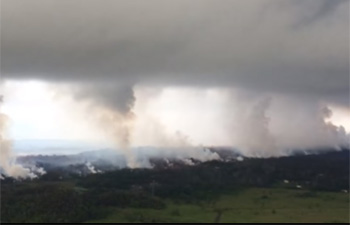WASHINGTON, May 21 (Xinhua) -- American and Canadian epidemiologists found that higher local temperatures and population densities correlated with a higher degree of antibiotic resistance in common bacterial strains.
A new study published on Monday in the journal Nature Climate Change revealed how environmental pressure was at play to make bacteria develop antibiotic resistance, previously thought largely due to repeated exposure through over-prescribing.
"The effects of climate are increasingly being recognized in a variety of infectious diseases, but so far as we know this is the first time it has been implicated in the distribution of antibiotic resistance over geographies," said the study's lead author, Derek MacFadden, an infectious disease specialist and research fellow at Boston Children's Hospital.
"We also found a signal that the associations between antibiotic resistance and temperature could be increasing over time," said MacFadden.
In their study, the team from Boston Children's Hospital and University of Toronto assembled a large database of U.S. antibiotic resistance information related to E. coli, K. pneumoniae, and S. aureus, pulling from various streams of hospital, laboratory and disease surveillance data documented between 2013 and 2015.
Altogether, their database comprised more than 1.6 million bacterial pathogens from 602 unique records across 223 facilities.
Comparing the database to latitude coordinates as well as mean and medium local temperatures, the team found that higher local average minimum temperatures correlated the strongest with antibiotic resistance.
Local average minimum temperature increases of 10 degrees Celsius were found to be associated with 4.2 percent, 2.2 percent and 3.6 percent increases in antibiotic resistant strains of E. coli, K. pneumoniae, and S. aureus, respectively.
When looking at population density, the study found that an increase of 10,000 people per square mile was associated with three and six percent respective increases in antibiotic resistance in E. coli and K. pneumoniae, which are both Gram-negative species.
In contrast, the antibiotic resistance of Gram-positive S. aureus did not appear to be significantly affected by population density.
"As transmission of antibiotic resistant organisms increases from one host to another, so does the opportunity for ongoing evolutionary selection of resistance due to antibiotic use,"said MacFadden.
"We hypothesize that temperature and population density could act to facilitate transmission and thus increases in antibiotic resistance," said MacFadden.













